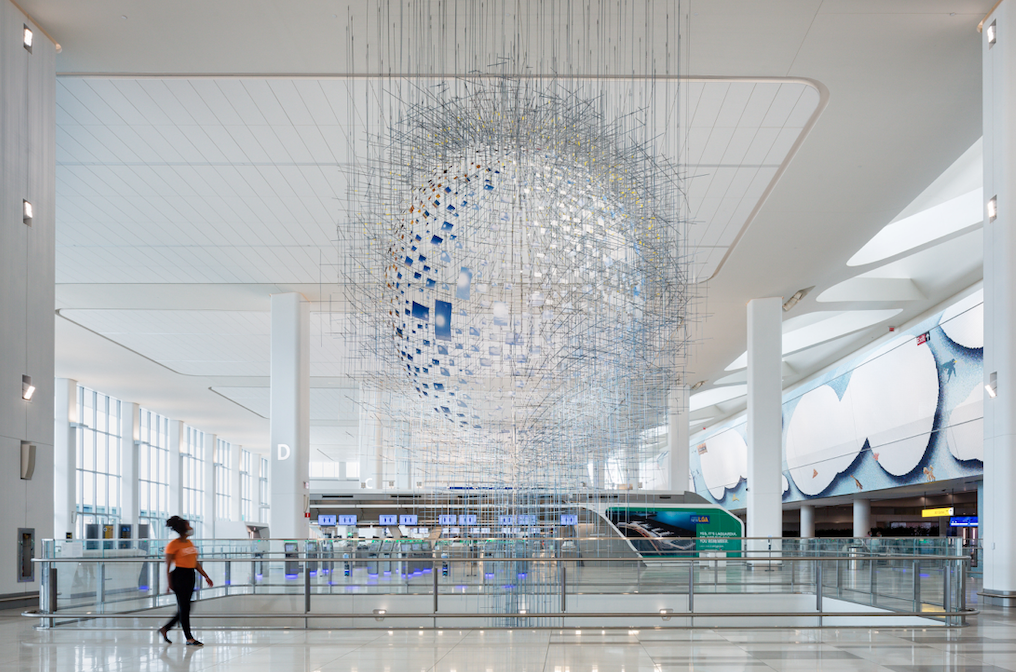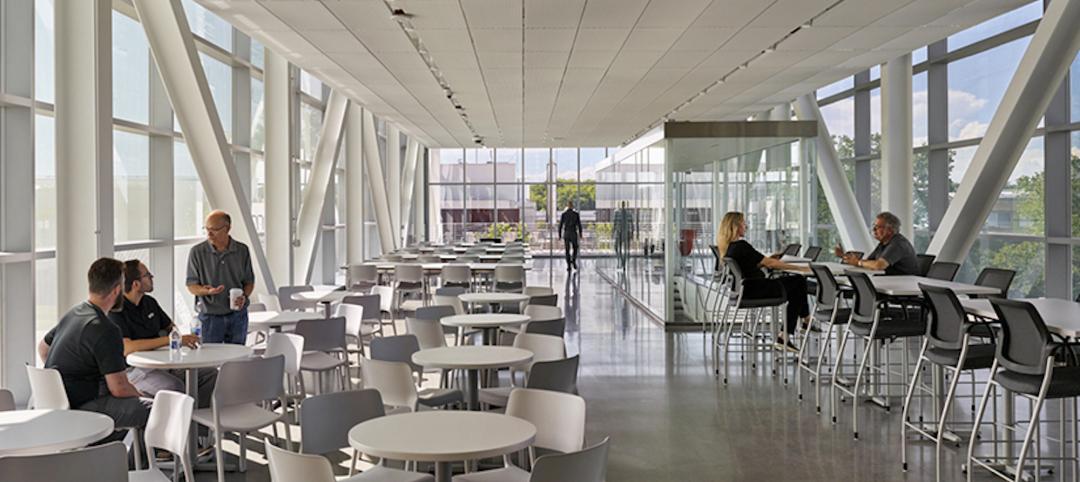Last year, SSOE Group saved an automotive client more than $250,000 by streamlining how data from the client’s manufacturing structures were gathered, using laser scanning, innovative workflows, and technology that converts point clouds to Revit models that can be imported to structural analysis software.
Innovation continues to be engineering firms’ best foot forward to remain competitive and relevant. And sometimes, “innovation” is resolutely basic: For a series of manhole inspections it performed for Carnegie Mellon University, Wiley|Wilson attached a camera controlled by a smartphone app to a 9-foot-long selfie stick for 360-degree information capture. KCI Technologies piloted AM Gradiometry technology, a subsurface investigation methodology that harnesses the power of AM-band radio to identify and map underground infrastructure and anomalies.
Admittedly, most other innovations engineers came up with weren’t as rudimentary. Jensen Hughes launched a new software program, HazAdvisr, that quickly categorizes chemical hazards and applies them to a project to achieve compliance, eliminating the need for time-consuming and often error-prone classification done by hand. AECOM’s patented water treatment solution, De-Fluoro, destroys a globally pervasive emerging contaminant Perfluorooctanoic Acid (PFAS), and optimizes infrastructure upgrades.
Thornton Tomasetti launched Beacon, an embodied carbon measurement tool that allows structural engineers to understand and manage embodied carbon optimization. And CDM Smith recently collaborated with Autodesk to develop the Rapid Energy Modeling tool, an integrated desktop application that enables energy managers and planners to conduct energy analyses at facilities without deploying physical resources onsite. Syska Hennessy was of the same mindset when it established a process to perform remote commissioning, punch-lists, and onsite field work virtually.
Engineers are more frequently being called upon for solutions that reduce their customers’ risks. For example, Affiliated Engineers Inc.’s resilience planning and design service features a tool that addresses climate change for the owner’s project location, characterizes the risk of failure to engineering systems should the identified potential disaster scale hazardous event(s) occur, develops adaptation and mitigation strategies, and presents this information in rich graphic form to the owner and design team.
Other innovations are designed as platforms for collaboration and greater efficiency. KLH Engineers created a series of custom Revit add-ins geared toward eliminating repetitive, rules-based tasks and providing the engineers with information they need to make informed decisions early in a project. And PBS Engineers is using 3D cameras to document the existing conditions of spaces during the initial site surveys. This process allows the team to have an accurate representation of the MEP conditions for a more coordinated design set.
Engineering firms expand services
These innovations emerged at a time when engineering firms were adding to their practice menus, and the sector continued to consolidate. Last October, IPS–Integrated launched a new service called CarTon, a complete cell and gene therapy operational readiness solution. This bundled service offering focuses on getting compliant cell and gene therapy products to market. Bernhard’s Energy-as-a-Service solutions offer healthcare clients alternative financing and project delivery methods that are designed to reduce cost structure and increase operational margins.
Burns & McDonnell hired a dozen professionals to expand services in the life sciences industry, collectively adding more than 200 years of additional design and construction experience in the pharmaceutical, biotech, animal health, medical device, and gene therapy sectors. EAPC Architects is now offering Entitlement services that process land development cases for rezoning properties, obtaining special permits and conditional uses for a specific land use. HPE Data Center relaunched its consulting practice in the U.S., Thailand, and Indonesia. Davis, Bowen & Friedel introduced the addition of in-house unmanned aerial vehicle (UAV) drone services. And DeSimone Consulting Engineers initiated a Risk Management Services practice.
For its industrializing colocation and hyperscale clientele, EYP Mission Critical rolled out a suite of formalized services focused on the adaptation of standardized designs for new paradigms, modular containerized implementation, tenant fit-out/retrofit, and optimization and operational efficiency in power, space, and cooling.
The coronavirus pushed several firms into new areas. Milhouse Engineering’s environmental experts developed a method for sanitization that combines a specially atomized fog and a three-stage HEPA air filtration system. NV5 Global offered a suite of COVID-19 support services. To support business continuity, its COVID-19 facility health and safety services provide site-specific deep cleaning protocols and training of cleaning staff to minimize risk of exposures. In California, the firm offered third-party building inspections and plan reviews in municipalities that closed their building departments during the outbreak. NV5’s MEP engineering and commissioning group supports remote field hospitals and facility renovations.
NV5 Global made nine strategic acquisitions in 2019 that added 1,100 employees, enhanced service offerings in the environmental, technology, infrastructure, and energy markets; and broadened its geographic coverage.
In 2019, IMEG Corp. acquired five firms and 10 new office locations. These acquisitions brought its employee count to 1,500 employees across nearly 50 locations. In 2019, Dewberry acquired California-based Drake Haglan and Associates, an 80-person firm serving private- and public-sector clients. P2S Inc. acquired Muni-Fed, an energy and civil engineering consulting firm, in Q4 2019. In August 2019, TLC Engineering acquired an FP/LS firm that doubled TLC’s revenue in this discipline. It also acquired a Chicago-based MEP firm that became its 15th location. And with the addition of design firms studio951 and EPOCH during the fourth quarter of 2019, Shive-Hattery expanded into two new markets: Lincoln, Neb., and South Bend, Ind.
Other firms saw operational opportunities in the virtual world: For instance, Ross & Baruzzini converted its entire IT infrastructure to Amazon Web Services cloud and virtual desktop services.
Last year, 31% of Desimone’s revenue came from green building and sustainability projects. And it was easy to forget, during a pandemic, that carbon neutrality remains a long-range goal for the built environment.
Morrison Hershfield, in collaboration with Humber College and project partners, completed a holistic deep energy retrofit of an aging Humber Building NX, making it the first existing building retrofit in Canada to achieve Zero Carbon Building-Design Certification from the Canada Green Building Council. In Spokane, Wash., McKinstry developed and designed Catalyst, a five-story, 159,000-sf cross-laminated timber (CLT) building whose goal is to be one of the largest zero-energy and one of the first zero-carbon buildings in North America.
Related Stories
Engineers | Nov 10, 2022
U.S. engineering firms cash in on a volatile, expanding market
New practices and markets drive growth for U.S. engineering and engineering-architecture firms. And firms are getting serious about reducing projects’ carbon footprint.
Giants 400 | Nov 9, 2022
Top 60 Data Center Engineering + EA Firms for 2022
Jacobs, Burns & McDonnell, WSP, and Alfa Tech top the ranking of the nation's largest data center engineering and engineering/architecture (EA) firms for 2022, as reported in Building Design+Construction's 2022 Giants 400 Report.
Giants 400 | Nov 8, 2022
Top 75 Sports Facility Engineering and EA Firms for 2022
Alfa Tech, AECOM, ME Engineers, and Walter P Moore head the ranking of the nation's largest sports facility engineering and engineering/architecture (EA) firms for 2022, as reported in Building Design+Construction's 2022 Giants 400 Report.
Giants 400 | Nov 8, 2022
Top 110 Sports Facility Architecture and AE Firms for 2022
Populous, HOK, Gensler, and Perkins and Will top the ranking of the nation's largest sports facility architecture and architecture/engineering (AE) firms for 2022, as reported in Building Design+Construction's 2022 Giants 400 Report.
Industry Research | Nov 8, 2022
U.S. metros take the lead in decarbonizing their built environments
A new JLL report evaluates the goals and actions of 18 cities.
Hotel Facilities | Nov 8, 2022
6 hotel design trends for 2022-2023
Personalization of the hotel guest experience shapes new construction and renovation, say architects and construction experts in this sector.
Green | Nov 8, 2022
USGBC and IWBI will develop dual certification pathways for LEED and WELL
The U.S. Green Building Council (USGBC) and the International WELL Building Institute (IWBI) will expand their strategic partnership to develop dual certification pathways for LEED and WELL.
Reconstruction & Renovation | Nov 8, 2022
Renovation work outpaces new construction for first time in two decades
Renovations of older buildings in U.S. cities recently hit a record high as reflected in architecture firm billings, according to the American Institute of Architects (AIA).
Sponsored | Steel Buildings | Nov 7, 2022
Steel structures offer faster path to climate benefits
Faster delivery of buildings isn’t always associated with sustainability benefits or long-term value, but things are changing. An instructive case is in the development of steel structures that not only allow speedier erection times, but also can reduce embodied carbon and create durable, highly resilient building approaches.
Building Team | Nov 7, 2022
U.S. commercial buildings decreased energy use intensity from 2012 to 2018
The recently released 2018 Commercial Buildings Energy Consumption Survey (CBECS) by the U.S. Energy Information Administration found that the total floorspace in commercial buildings has increased but energy consumption has not, compared with the last survey analyzing the landscape in 2012.

















